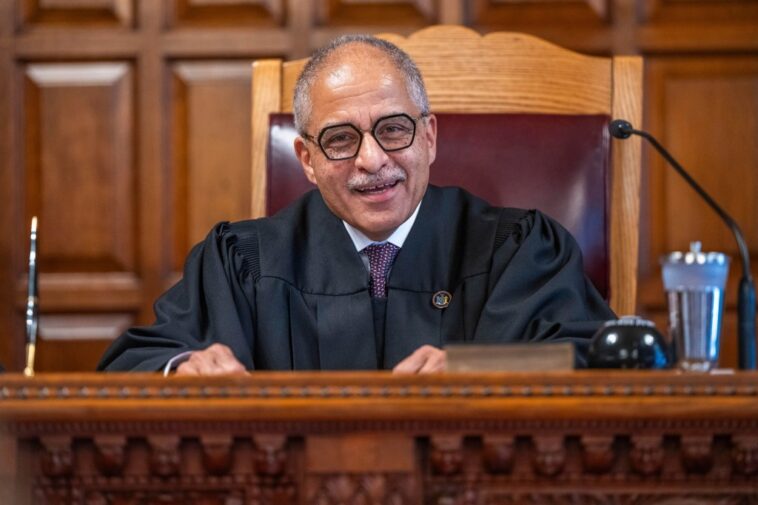The New Procedure for Appellate Court Judge Substitution Explained
The Background and Disagreement with Editorial Board
As a former judge, I have always respected the opinions of this publication’s Editorial Board. However, I disagree with the Oct. 23 editorial calling into question the change adopted by the state Court of Appeals in the procedure for substituting a judge from outside the court when one of the court’s judges (usually due to a recusal) is unable to participate in a particular case.
The State Constitution and Previous Practice
The state Constitution specifies that five members of the Court of Appeals shall constitute a quorum, that the concurrence of four shall be necessary to a decision, and that in case of the temporary absence or inability to act of any judge of the court of appeals, the court may designate any justice of the supreme court to serve as an associate judge of the court during such absence or inability to act. In the past, when a Court of Appeals judge has recused him or herself from a case, the court has not immediately substituted, or “vouched in,” a justice of the state Supreme Court to fill in for the recused judge. Instead, it has proceeded with the case, including preparation, oral argument, consultation, and voting, with six judges (or, in the case of two recusals, five judges). If the vote turns out to be 3-3, or 3-2, thus falling short of the four votes necessary to a decision, only then has the court vouched in a Supreme Court justice (or two of them). The entire decision-making process, including the scheduling and presentation of oral arguments by the attorneys, is then repeated.
The New Procedure Under Chief Judge Rowan Wilson
Under the new procedure, the court has altered this practice by vouching in a Supreme Court justice as soon as a recusal occurs, which ensures that, with seven judges participating, the decision-making process will only occur once. The editorial asserts that the newly adopted practice “goes against the Constitution’s intent to have Court of Appeals judges decide these matters.”
Constitutional Authorization for Substitution of Judges
No such restrictive intent is evident in the Constitution. Indeed, it provides that the Court of Appeals shall consist of the chief judge and six associate judges, “and such justices of the supreme court as may be designated for service in said court as hereinafter provided.” The Constitution simply authorizes substitution, and says nothing about delaying that substitution until after the decision-making process has been completed without attaining the requisite four-vote majority.
The Efficiency of the New Procedure
While the wait-and-see approach employed by the court in the past may have been permissible, there is certainly nothing in the Constitution that requires it. Under its new leadership, the Court of Appeals, acting well within its constitutional authority, is departing from an inefficient procedure that slows down the dispensation of justice. The new procedure is not only unquestionably consistent with the constitutional design, but it is also more efficient and promotes collegiality.
The Credentials and Role of Vouched-In Justices
The justification for delaying the substitution of vouched-in justices seems to be the belief that Supreme Court justices, who are elected, are inferior to Court of Appeals judges, who are appointed through a three-step process, and therefore should only be vouched in after it is determined that their tie-breaking vote will be needed. This premise is simply incorrect and is belied by the Constitution itself, which expressly authorizes the substitution of Supreme Court justices and deems them, when so substituted, to be part of the Court of Appeals. The justices who are vouched in serve in the Appellate Division, a position to which they were elevated by the governor, and they all have a wealth of judicial experience. The new procedure invites the vouched-in justice to temporarily become part of the Court of Appeals, as contemplated by the Constitution, and allows the justice to participate fully with his or her colleagues in the determination of the appeal from the outset, rather than entering the scene belatedly, as an outsider among judges who have already engaged in the decision-making process together.
Leadership of Chief Judge Rowan Wilson
Chief Judge Wilson should be commended for rethinking and reforming an antiquated procedural custom that tended to impede swift justice in the most important appeals considered by New York’s highest court. Under his leadership, the new procedure adopted by the Court of Appeals is promoting efficiency, collegiate decision-making, and constitutionally authorized substitution of judges.
Originally Post From https://www.nydailynews.com/2023/10/28/a-better-way-for-n-y-s-top-court-always-having-a-full-bench-of-seven-judges-makes-more-sense/
Read more about this topic at
PRACTITIONER’S HANDBOOK FOR APPEALS
28 USC 2107: Time for appeal to court of appeals

